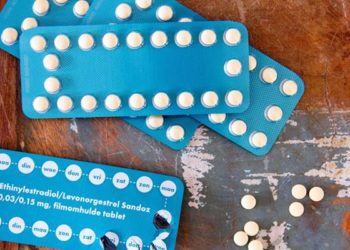Lower-dose levonorgestrel IUD effective, well-tolerated
Image: PD
1. Lower-dose 13.5 mg and 19.5 mg levonorgestrel intrauterine contraceptive systems (IUDs) were found to be highly effective for up to 3 years.
2. Both devices were easy to insert and well tolerated by paras and nulliparas.
Evidence Rating Level: 1 (Excellent)
Study Rundown: This phase III clinical trial found that the newly developed, lower-hormone levonorgestrel IUDs were highly effective, relatively easy to insert, and well-tolerated for up to 3 years. These lower-dose IUDs have smaller frames and findings from Phase II trials suggest they are easier to insert than traditional IUDs.
Strengths of this study include large sample size and multi-site, multi-national cohort. limited in that it only included women with regular menstrual cycles, and thus could not evaluate efficacy with regards to abnormal uterine bleeding, a common indication for IUDs. Future studies might randomize women to the smaller, lower-dose versus Mirena IUD to assess contraceptive efficacy as well as treatment of abnormal uterine bleeding.
Click to read the study in Obstetrics & Gynecology
Click to read the study overview on clinicaltrials.gov
Relevant Reading: Recent developments in the clinical use of the levonorgestrel-releasing intrauterine system
In-Depth [randomized controlled trial]: In this Phase III single-blinded trial, researchers from 138 centers around the globe randomized 2,885 women to either a 13.5 mg (n=1,426) or 19.5 mg (n=1,445) levonorgestrel intrauterine contraceptive device (IUD) for three years. The primary outcome was pregnancy rate (number of pregnancies/100 women-years). Secondary outcomes included bleeding patterns, ease of placement, safety, continuation and user satisfaction.
Over a 3-year study period, women with the IUD were less likely to become pregnant: 0.33 (95% CI=0.16-0.60) for the 13.5mg IUD and 0.31 (CI=0.15-0.57) for the 19.5 mg IUD. Cumulative failure rates were 0.9% for the 13.5 mg and 1.0% for the 19.5 mg system. Overall, placement was successful in over 99.5%, placement was rated as easy by physicians in 90% of patients and only 8% of women rated severe pain associated with placement. Discontinuation rates were 21.9% and 19.1% in the 13.5 mg and 19.5 mg groups, respectively.
By Maren Shapiro and Leah Hawkins, MD, MPH
More from this author: IUD contraception equally safe in teenagers as in older women, Black men less likely to receive follow-up for elevated prostate cancer marker, PSA, USPSTF recommends chemoprevention for women at high risk for breast cancer,
©2012-2013 2minutemedicine.com. All rights reserved. No works may be reproduced without expressed written consent from 2minutemedicine.com. Disclaimer: We present factual information directly from peer reviewed medical journals. No post should be construed as medical advice and is not intended as such by the authors, editors, staff or by 2minutemedicine.com. PLEASE SEE A HEALTHCARE PROVIDER IN YOUR AREA IF YOU SEEK MEDICAL ADVICE OF ANY SORT.






